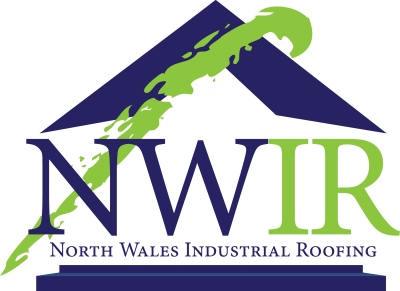What Damage Can be Caused By Cut Edge Corrosion?
As experienced roofing contractors, who have worked on a wealth of commercial roofing and industrial roofing projects across the North West, and throughout the rest of the UK; we often come across common issues that can occur – such as cut edge corrosion.
What exactly is cut edge corrosion?
As part of the metal cladding manufacturing process, corrugated sheets are coated in a plastic material that helps prevent the underlying metal from being corroded by the elements and improves its appearance. The cladding is then cut to size in a factory, and as a result of these cut edges no longer have any coated protection, and the metal can be left exposed.
After the metal sheets are attached to a roof or elevation of a building, cut edge corrosion can occur as the edges are exposed to oxygen, along with water and other pollutants. As time goes by, the original factory coating can end up peeling back from the uncovered edges.
It’s at the point where the metal sheet ends or overlaps with another panel that corrosion and weathering are likely to occur, and this is exactly what professional roofing contractors can treat and repair in order to prevent more serious product decay.
Where can cut edge corrosion occur?
As mentioned, this type of corrosion is generally found around the edges of metal sheets where they overlap, and at the eave edges. It usually begins around the edges but can quickly spread when water gets inside.
Metal guttering can also suffer from this type of corrosion, especially if they have been poorly fitted or blocked by debris. The damp can end up spreading and penetrating through any exposed metal edges to other parts of the building, causing structural weakness and further costly damage.
How can water make cut edge corrosion worse?
When this type of corrosion is left completely untreated, the original protective coating will continue to pee; away, leaving the metal surface more and more exposed. The exposed surface is more vulnerable to water, which can penetrate the metal, resulting in rust.
Without the coating offering any protection, the rust will soon eat away at the cladding, causing it to become brittle. This then leads to further water leaks and damage, which can impact both the aesthetics and structural integrity of the roofing system and the entire building. The damage in some cases can be extremely severe and expensive to repair, meaning the sooner the corrosion is treated, the better.
Treating cut edge corrosion
By treating cut edge corrosion straight away, you can protect the cladding from the elements and reduce the extent of the peeling back of the original coating. If done by professional roofing contractors, the repair work will protect and improve the overall look of the roof and building.
Roofing contractors will identify any areas that have been affected by the corrosion. Then they’ll clean the areas and prepare them for treatment. Any loose paint, rust, or other corroded areas are removed depending on the severity of the corrosion. In order to better protect any affected areas, a high-quality weatherproof sealant is then applied.
If your roofing system is showing signs of cut edge corrosion, then NWIR can ensure any treatments and repairs that are required are carried out with little disruption to your property, and business.
Get in touch with our team today for more information.
